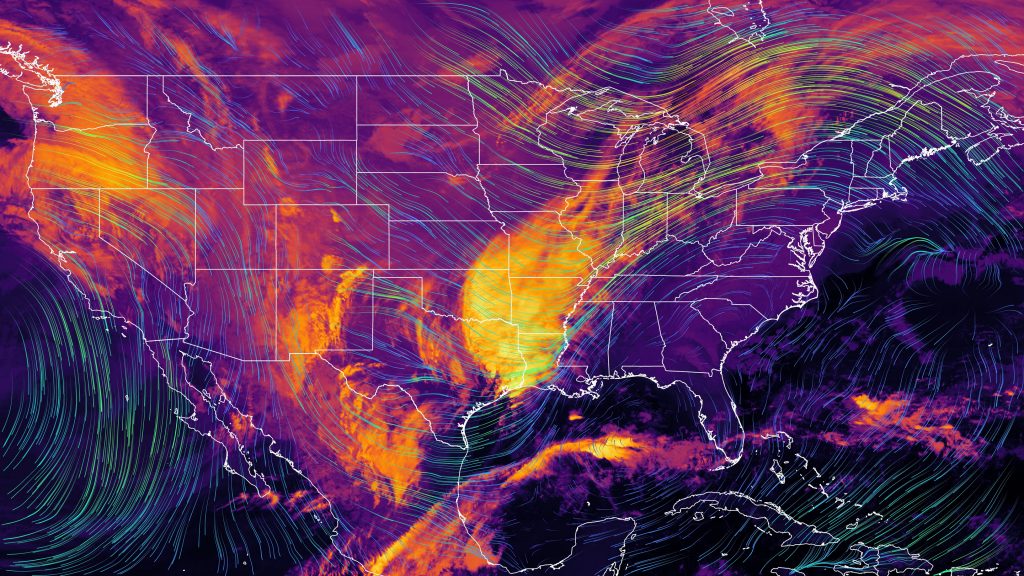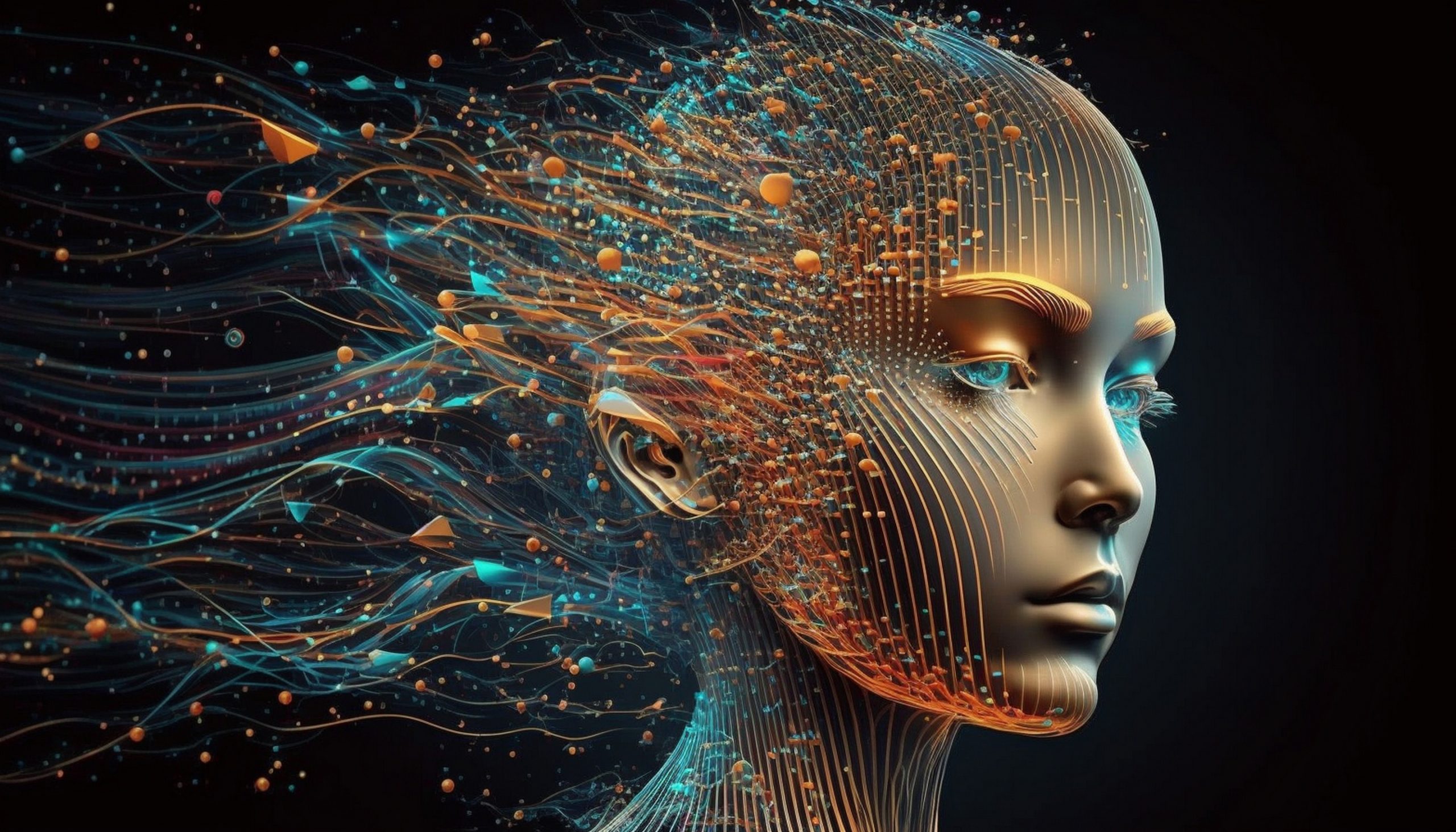The two most influential trends of our time, climate change and digital transformation, will shape the future of humanity in the 21st century and beyond. Properly managing their interaction is crucial to upholding our social and democratic values. Recent scientific reports from the Intergovernmental Panel on Climate Change (IPCC) indicate that climate change demands action from all actors across politics, business, science, and civil society. AI shows promise in supporting these efforts, but its potential risks must be understood for AI to be developed responsibly.
Responsible AI-for-climate strategies must be mindful of potential negative impacts on the least-well-resourced actors, such as those in the Global South, who bear the brunt of climate impacts and digital transformation-related power transfers. Governments must invest in access to relevant data and digital infrastructure, deployment in climate-relevant sectors, targeted research and innovation programs, and incentives aligned with climate-focused innovation.
Capacity-building efforts are crucial to empowering businesses, communities, and individuals with the knowledge, tools, and skills for the responsible adoption of AI-for-Climate solutions. International cooperation is vital to aligning these efforts with broader climate change goals. It is time for targeted government resources and bespoke support packages to accelerate the responsible adoption of AI for climate solutions.
Introduction
With the rapid digitisation of entire industries, wealth data has been amassed for different utility purposes and financial gain. With this rise of data and the ever-growing power of artificial intelligence, companies have been able to use AI simulations to help fast-track the process of reaching tangible real-world solutions that can be integrated into core strategies for combating climate change. Quantum computing also offers the potential for scientists to explore new areas faster than usual, such as reducing air pollution and waste management. While these technologies are still in their infancy, they offer huge potential to reduce global emissions in ways never before thought possible drastically.
This article will explore how artificial intelligence can help mitigate harmful greenhouse gases and build stronger communities worldwide. By providing knowledge on how artificial intelligence is being used for climate action, governments and organisations like OceanBlocks can play a more active role in driving the pace of positive outcomes toward networks a net-zero future.

An Overarching Approach to Utilising Ground-Breaking Tools
One of the most promising ways for artificial intelligence to deliver meaningful change to help combat harmful greenhouse gas emissions is through AI-enabled predictive analytics. Predictive analytics can be used to create models that can identify patterns in climate data and offer insights into future scenarios, allowing us to plan better and prepare for potential future situations. This kind of predictive modelling will allow us to understand better how our current actions impact the environment and enable us to take more informed decisions to mitigate any associated risks.
AI-enabled monitoring systems can also be used to detect emissions at both the global and local levels. Using AI techniques such as machine learning, these systems can process vast amounts of data from sensors worldwide to detect emissions sources in different locations, helping us understand where action needs to be taken. The data gathered by these systems could then be used by policymakers at all levels of government – from local mayors to national leaders –to inform their decisions about which interventions would have the most significant impact on reducing emissions.
In addition, AI technology can also be used for more efficient energy production and consumption. By leveraging AI techniques such as deep learning, we can use more intelligent algorithms and smarter technologies like smart grids or smart homes that use sensors and AI-driven automation processes to optimise energy use across households or entire cities. This advanced energy usage could drastically reduce energy consumption and improve efficiency by using less energy overall. Smart grids could also be coupled with renewable energies like solar or wind power, allowing for further reductions in greenhouse gas emissions.
Finally, AI-powered automation could also improve carbon capture technologies or reduce methane leaks from natural gas operations. With advances in AI simulation capabilities, researchers can now explore new methods for carbon capture and develop better methane detection technologies that can help reduce emissions from natural gas operations more effectively than before.
Quantum Computing & AI
Quantum computing is a form of computation that uses quantum-mechanical phenomena, such as superposition and entanglement, to perform operations on data. Quantum computers use qubits, particles that can exist in multiple states at once, to store information, allowing them to process complex calculations much faster than classical computers. By harnessing the power of quantum mechanics, quantum computers have the potential to revolutionise industries such as finance, cybersecurity, and drug discovery. Moreover, quantum computing and AI could prove to be humanity’s ‘Mjolnir’ for this Thor fans, the hammer that fights back in the climate war.
Quantum computing could help us to do very complicated calculations with AI. It could help us make better predictions, understand how our actions affect the environment, use energy smarter and capture carbon from the air, making it an essential tool for reducing harmful gases in the atmosphere. AI coupled with quantum computing could also help reduce global emissions by enabling more efficient and accurate simulations of complex chemical reactions that are key to renewable energy production or carbon capture and storage.
As the climate emergency continues to threaten our very existence, it is clear that we need new solutions to mitigate greenhouse gas emissions quickly and effectively. Artificial intelligence offers an unprecedented opportunity to fast-track our progress towards reaching tangible real-world solutions for a more sustainable future. By understanding these technologies better, governments and organisations like ours can take steps toward implementing the most effective strategies with agility and speed. Speed and accuracy are needed to address climate concerns to alert governments in higher-risk areas with few resources to tackle climate change, like Fiji. Warmer weather has caused seas to rise over the decades, causing the displacement of communities as they seek higher ground.
AI can aid as an early warning tool to alert authorities of the likelihood of a destructive weather event and prepare emergency resources for the aftermath. By harnessing the power of AI, we can create tangible solutions that will help us address this global crisis. We must use all the tools available to give our future generations a chance to thrive and flourish. AI tools can also be helpful in severe weather events or crises because they can provide rapid insights into the likelihood of an event occurring and give emergency responders access to the most up-to-date information. For example, AI algorithms and simulations can be used to predict extreme weather patterns and analyse past data about disasters to inform responses.
AI-powered predictive analytics tools can also be used to develop accurate forecasting models for severe storms and other natural disasters. In addition, AI-driven technologies like machine learning and deep learning can help identify anomalies and changes in climate conditions that could indicate a potential hazard. This early warning system would allow authorities to better prepare for a disaster before it occurs.
Artificial intelligence is already being implemented in various sectors, such as agriculture, healthcare, urban planning, and transportation, to improve safety during times of crisis. AI robots are being developed that can assist firefighters with search and rescue operations during wildfires or floods; drones are being used for surveillance operations; satellite imagery is providing detailed information on the impact of natural disasters; and autonomous vehicles are being tested so that they can navigate dangerous areas with precision. All these AI-enabled tools are helping us become more prepared when responding quickly and efficiently to any natural disaster. By working with policymakers, researchers, organisations and citizens alike, we can ensure that using AI for good is not just a rhetoric but an actual reality. We have the opportunity to make real-world changes for the betterment of our planet – so let us take up the challenge head-on and fight in unison.
It is time to act and use AI for the immense value it promises. Our commitment to helping reduce global emissions using the tools at our disposal includes nurturing and developing innovative responses to climate change and the educational aspect of approaching the change-making journey with accuracy and systematic reasoning. Let us make this a reality by combining efforts with science-based entities, AI natural language developers, weather data organisations, robotics and drone companies, software companies, and strategic firms like OceanBlocks.
A world with sustainable energy solutions where everyone has access to clean air and water and the tools that aid in these endeavours are evolving astronomically with every iteration. AI-driven solutions will continue to be critical technological participants to help identify and rectify areas of concern. Furthermore, the collaboration of the global economy is required to make changes in unison to save the planet we all rely on to exist.
Here are Eight ways AI is Helping Make a Difference in the Climate Fight.
1. AI algorithms and simulations for predictive analytics
2. Machine learning and deep learning to identify anomalies
3. Autonomous vehicles for navigation in hazardous areas
4. AI robots for search-and-rescue operations during disasters
5. Drones for surveillance
6. Satellite imagery providing detailed information on natural disasters impact
7. Quantum computing to analyse vast amounts of data rapidly
8. Natural language processing (NLP) to detect global trends related to climate change
Activity on the Ground – A Business Perspective
The business community currently relies on effective monitoring solutions made possible via smart meters and IoT gadgets, and software that collates data from all areas of a building. The rationale of this data collection is aimed at garnering insights that explain an organisation’s carbon footprint. For instance, to help determine energy usage, power fluctuations, gas usage, the quality of air and the volume of water used within a 24-hour cycle.
Carbon accounting is a crucial business component that requires organisations to account for their (scope one and two emissions) as scope three covers the emission of others within the same supply chain; it is much more challenging to address. Therefore, quality data is imperative as the insights help generate the oversight of the functional changes we can later implement. For deeper insights into (scopes 1,2 & 3 emissions), please read our article entitled Corporate emission reduction claims are under scrutiny: Uncovering flawed logic.
Collaboration in Action
The Tether & OceanBlocks partnership enhances our united approach to addressing climate change by relying on partners’ strengths to bolster the rigour and diligence required to yield the best results. In the case of building management, for instance, OceanBlocks works with a dynamic partner called Tether, which provides the physical devices and the software that enables a more nuanced approach to real-time data collection that alerts to energy inefficiencies or pattern recognition, identifying potentially hidden problems. The patterns recognised by the data analysis allow resources to be targeted with precision which helps to place priority and emphasise the most critical areas where attention can be turned to integrating higher efficiency metrics.
Conclusion
We hope this article has provided insight into how artificial intelligence can fast-track tangible real-world solutions and positively impact our environment. At OceanBlocks, the responsible adoption of artificial intelligence for Climate Solutions is one of our key strategies in helping mitigate harmful green use gasses globally. We are committed to researching, developing, and deploying technologies while ensuring these innovations are accessible and benefit all members of society. We need to ensure that these technologies are accessible and help everyone, and we must work together and take collective action if we want to make a difference. Only through collaboration, collective action and shared responsibility will we be able to build stronger communities worldwide and ensure no one gets left behind in the digital transition.
Co-authored by Ryan Babbage and Lachlan Mee

